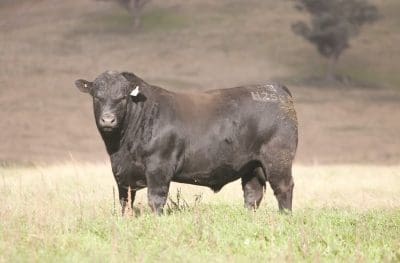
Dick Whale
Successful integration and acclimatisation of new bulls into herds is vital to ensure bulls are as effective and productive as quickly as possible says Dick Whale, a well-known Victorian-based independent breeding and marketing service agent.
Mr Whale who also acts as a facilitator for More Beef from Pastures programs in Victoria, offers some tips to achieve successful acclimatisation of newly purchased bulls. His comments relate specifically to southern Australian beef production systems.
Taking delivery
Most bulls are run in large mobs in stud herds with their peers and would have rarely been alone. It is therefore helpful to have some cattle, for example a handful of steers or pregnancy tested in calf cows, in the yards when a new bull, or bulls, arrive. The objective is to re-create the sense of herd protection, while the new arrivals acclimatise and familiarise themselves with their new surroundings. This may take several days or weeks and adequate feed and water should be on hand before taking delivery of these animals.
It is advisable to find out how bulls have been handled on their property of origin, so appropriate allowance can be made. It is important to ask if the bulls you are receiving are used to dogs, motorbikes or horses, and incorporate this information into your handling processes.
Integrating into a new herd
Avoid ‘boxing’ or mixing new bulls with existing groups of bulls. The majority of breakdowns in new bulls are caused when they are added directly to an existing group that already has an established hierarchy or ‘pecking order.’ If possible, run bulls alongside each other for a while before running them together.
At joining time
All bulls should be tested for their reproductive ability prior to joining each year. This should include assessing:
- body condition score which should ideally be 3 for British breed bulls (minimum of 2.5 and maximum of 3.5)
- physical soundness including structural conformation
- reproductive organs including:
- scrotal skin pliability, thickness and inflammation
- scrotal palpations for fat, freedom of movement, head, body and tail of epididymis, shape of testes, hernias
- prepuce, sheath and umbilicus
- penis, including palpation through skin, protrusion of penis and examination of erect penis (to exclude a potentially large number of penile and prepuce abnormalities)
- serving ability
 The serving ability test is a useful procedure, however, a meaningful result requires a trained person to use careful application of animal husbandry skills. It is recommended that a local veterinarian carry out the test under approved guidelines. The close observance of a bull during a serving ability test allows observance of sexual behaviour and libido, mounting behaviour, exteriorisation of the penis and ejaculation. Many problems are detectable through serving ability testing that may not be apparent just on a physical examination.
The serving ability test is a useful procedure, however, a meaningful result requires a trained person to use careful application of animal husbandry skills. It is recommended that a local veterinarian carry out the test under approved guidelines. The close observance of a bull during a serving ability test allows observance of sexual behaviour and libido, mounting behaviour, exteriorisation of the penis and ejaculation. Many problems are detectable through serving ability testing that may not be apparent just on a physical examination.
Once joined, check new bulls regularly to make sure they have not had a breakdown or moved paddocks.
Single-sire mating with new bulls is preferred to prevent injury due to fighting, but this practice needs to be carefully managed to ensure adequate conception rates are achieved. To cover the possibility of bull failure or breakdown in single-sire mating situations, it is prudent to introduce a back-up bull to the joined herd for two to three weeks following the primary mating.
If multiple sire joining is the only, or desired option, ensure bulls are run together prior to joining and that they are roughly the same age, weight and size. Avoid joining horned and polled or dehorned bulls with the same mob of cows as this may result in the demonstration of dominance behaviour, and subsequent injury and breakdown.
Following joining
After the mating season, keep bulls separated if possible to avoid injuries caused from fighting, particularly if you have a large number of bulls. Where bulls are run together, it is particularly important to ensure a good supply of feed as this will help minimise fighting.
Further information:
For more information about managing bulls for high conception rates, managing bulls in single-sire matings and how to assess bull soundness, readers can view the following More Beef from Pastures procedures:
Source: MLA’s More Beef from Pastures.
